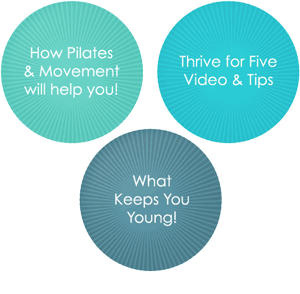Yesterday temperatures dropped, and I noticed that my tires needed air. Not a big deal, right? Except
 that in my previous 20 years of driving, there had always been a father, boyfriend, or husband eagerly volunteering to do it for me. So it’s no surprise that I had no idea how to start! Luckily, thanks to YouTube and a bemused gas station attendant, I soon solved the mystery of the gauge and was on my way, with my tires and my ego ever so slightly inflated.
that in my previous 20 years of driving, there had always been a father, boyfriend, or husband eagerly volunteering to do it for me. So it’s no surprise that I had no idea how to start! Luckily, thanks to YouTube and a bemused gas station attendant, I soon solved the mystery of the gauge and was on my way, with my tires and my ego ever so slightly inflated.
Similarly there are whole muscle groups lying dormant in our bodies, not because they are lazy, unhealthy, or unimportant, but simply because another muscle group took over the job they were designed to do, so they never learned how.
One of these underutilized groups is the oddly named serratus anterior, a muscle group that wraps around the sides of the rib cage and attaches to the inner edges of the shoulder blades.
When flexed, the muscles of the serratus anterior appear to lengthen the arms by wrapping the shoulder blades forward toward the chest, creating a three-dimensional movement reminiscent of the flapping of wings.
The mobility pattern of a well-functioning serratus anterior allows dancers to move their arms above shoulder height while maintaining a long neck, an open chest, and an elegantly lifted posture. This same protracting and retracting action is what makes or breaks a boxer’s left hook.
In my case, because of long-held postural imbalances, the upper trapezius muscles in the back of my neck were working overtime, doing their job and that of the serratus. No wonder I suffered from forward head carriage and neck pain! An underactive serratus anterior can also lead to stagnation of the throat chakra, rotator cuff injuries, and numbness down the arm.
Searching for the subtle feeling of flexion in the serratus requires persistence and mental focus. I found it with the guidance of my trainer, Nikki, during a private session this month. Although I have only recently begun to strengthen this “sleeping beauty” of a muscle group, I notice that I am already moving more gracefully and breathing deeper, thanks to my newfound shoulder stability. The serratus anterior serves as a reminder to be patient with the parts of ourselves that may be slower to respond than others. Like me, you may find the strength and support you seek, hidden just below the surface.
– Contributed by Jamie Skinner
 Jamie Michelle Skinner is an extroverted introvert, occasional hermit, writer, dancer, and somatic educator. After losing over 100 pounds through her passion for dance, her mission is to inspire dancers from all walks of life to find freedom, joy, and health through “writing” their own story on the dance floor, using a vocabulary of mellifluous movement creativity that is both universal and unique as well as grounded in the body’s own natural intelligence.
Jamie Michelle Skinner is an extroverted introvert, occasional hermit, writer, dancer, and somatic educator. After losing over 100 pounds through her passion for dance, her mission is to inspire dancers from all walks of life to find freedom, joy, and health through “writing” their own story on the dance floor, using a vocabulary of mellifluous movement creativity that is both universal and unique as well as grounded in the body’s own natural intelligence.
Jamie is a graduate of the University of Maryland’s prestigious Philip Merrill College of Journalism, where she studied literary journalism. Recently Jamie has become an avid practitioner of Nia, a movement form encompassing dance arts, martial arts, and healing arts that is adaptable to many levels and abilities. Since completing her white belt in October 2014, she has undergone three specialized Nia trainings, and she is now certified to teach Moving to Heal Nia, Nia FreeDance, and Nia 5 Stages, a developmental movement practice for self-healing. In addition she is a Pilates Sports Center teacher-in-training. Jamie lives in Santa Barbara, California.


I like what you said about finding, exploiting, and building those dormant muscles in our bodies — I definitely believe that. The body is so complex, yet so simple. I am sure that there are a lot of functions that we cannot even imagine. These functions or muscles could even help us become better at doing Pilates. Thank you so much for your thoughts!